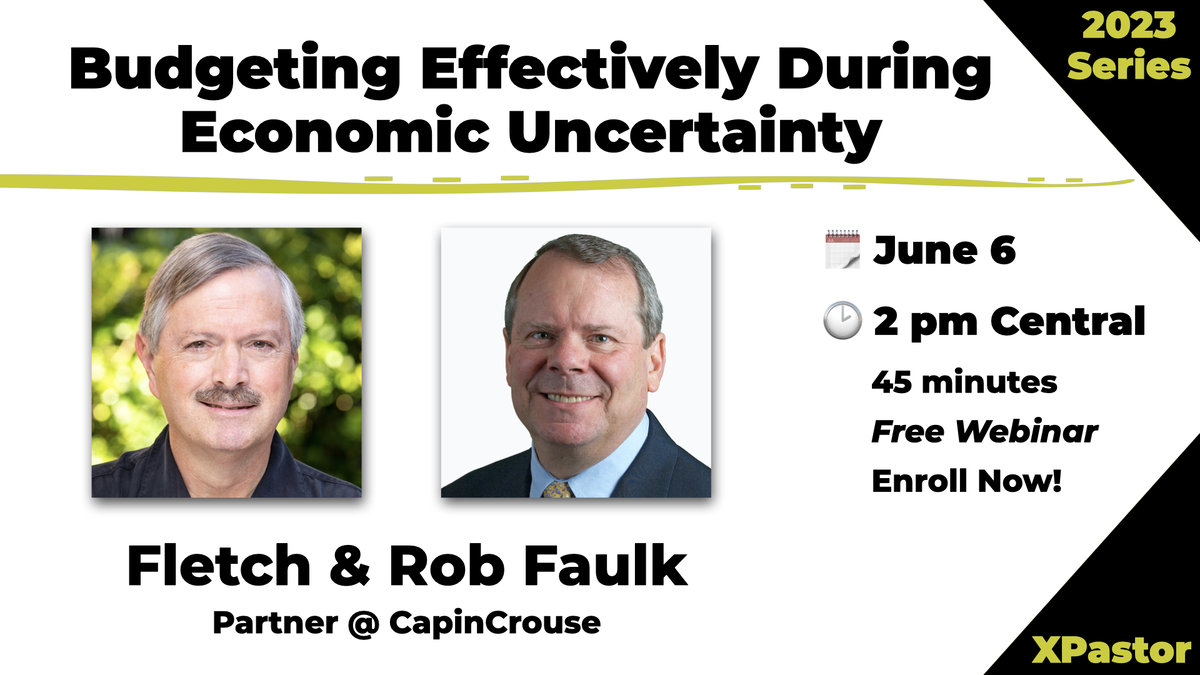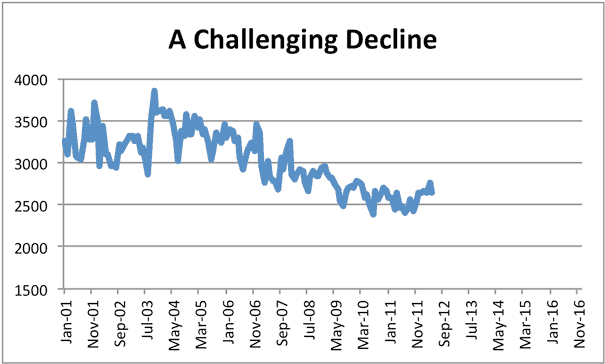Would it surprise you to learn that, of the churches recently surveyed by Giving Rocket, only fourteen percent were meeting or exceeding budget? Knowing that churches rely entirely on donations to survive, not meeting the annual budget means critical mission work is in jeopardy of being underfunded. Fundraising for any non-profit organization has, and always will, present challenges because the root of its failures typically stems from poor communication. Conversely, successful communication is one of the key attributes of any organization, but especially churches. The most common synonym for “successful” is “accomplishment.” Is your church “accomplishing” or exceeding its budget?
Offering Envelopes
Historically and traditionally, churches have relied on one primary source of communication to promote giving in their organizations—offering envelopes. This mode of communication had such an impact that companies were created out of its need as far back as a century ago, and several are still in operation. How can this be, you might ask, given the ubiquitous influence of technology? Even the United States Postal Service is struggling because there is an obvious shift in communication preferences with the evolution of technology.
First, let me remind you that churches are dealing with people, and people will always have a diverse set of preferences for how they do anything, including giving.
Second, is your church doing everything it can to promote giving? Are you addressing it from the pulpit consistently? Are you communicating directly and regularly with your members? Do your members know all the ways your church benefits from these charitable gifts? After all, isn’t the church, the Body of Christ, biblically, ethically and morally obligated to reveal this information? How many avenues of giving are provided to the members? Do you still rely solely on envelopes? What about online giving, text giving, kiosk giving or mobile giving?
From the Pulpit
There is no scientific correlation between preaching about stewardship and how much your church receives in donations. But just like anything else, if you never ask, you will probably never receive. Keep in mind, it’s not what you say so much as how you say it. While I am not employed with Giving Rocket, I am comfortable sharing with you that they provide a document titled “The Giving Talk” to help you develop just the right words to share with your congregation, motivating them to at least continue, if not increase, their giving. You can also seek out similar resources to accomplish the same.
Communication
Earlier, I mentioned the importance of communication. Don’t keep it a secret when your church is blessed with giving that supports a particular cause, or even helps it reach budget. Shout it from the mountain tops, along with praise and gratitude. People are motivated by many things, but none are as effective as praise. Don’t hesitate to send contribution statements at least quarterly. With all of the activities going on in each person’s life, we need to be reminded of the importance of financially supporting the church. While it is not technology-based, a monthly mailing program still addresses a certain sector of individuals that “prefer” to give with an envelope. Even for the tech junkies, the monthly mailing program serves as a communication piece that reminds members to fulfill their spiritual obligation on a monthly basis.
Online Giving
It’s refreshing to learn from the Atlas of Giving that, despite the economic struggles this country has been facing for many years, charitable giving increased 13.3 percent in 2013 over 2012. Much of this can be attributed to the adoption of online giving. In this cashless culture, and with the ever-increasing security measures to make these types of software PCI Level I compliant, online giving is a significant venue for increasing contributions in your church. For the protection of your members, make sure the software you are using is PCI Level I compliant (provides the ultimate security), not just PCI compliant. Some benefits of online giving include reduced administrative effort, guest donations (no signup is required) and recurring donations. Online giving is also an excellent resource for reaching beyond your membership, in terms of charitable giving, as it opens the doors for businesses and ministry supporters from all over the world to contribute to the efforts of your church.
Giving Kiosks
Another communication resource to increase giving can be found in giving kiosks. Some will say that they don’t want ATM machines in their church. Churches that use giving kiosks realize that, if placed in a key area or areas of your church, it serves as a reminder, just like monthly envelope mailings or periodic contribution statements. These same kiosks can serve as check-in stations, event registrations and more, further increasing the value.
Mobile/Text Giving
Statistics for 2013 show that more people purchased their Christmas presents online via a mobile device than any year prior. Some of us do everything on our cell phone or tablet—I certainly do! Don’t overlook this method of giving. It is so simple, and the adoption rate is climbing. A new method of giving that evolved several years ago is text giving. Some companies charge your cell phone company, which then shows up on your monthly bill. Others bill you through a separate invoicing process. The latter is much easier to setup.
In my opinion, we are very fortunate to live in a time in which all of these options are available to help increase giving in the churches, especially in light of the declining attendance that churches of every denomination are facing these days. The beauty of this group of stewardship resources is that you don’t have to settle for just one. In fact, there is data to suggest that one is simply no longer enough.
While it may be difficult to interpret actual giving as a percentage from each of these categories (envelopes, online, text, kiosk, mobile), let’s assume that each represents one equal piece of the total giving/stewardship pie. Since there are five, mathematically, we can conclude that each piece of pie represents 20 percent of your total potential giving. So, theoretically, if your church is only providing one of these methods to its members, it’s only reaching 20 percent of its total stewardship potential and, therefore, probably not exceeding its budget. As the Body of Christ, reach out to all of your members and their preferences, so that when they are called to give, they have all available options in place to do it—at that moment—using their “preferred” method of giving.








